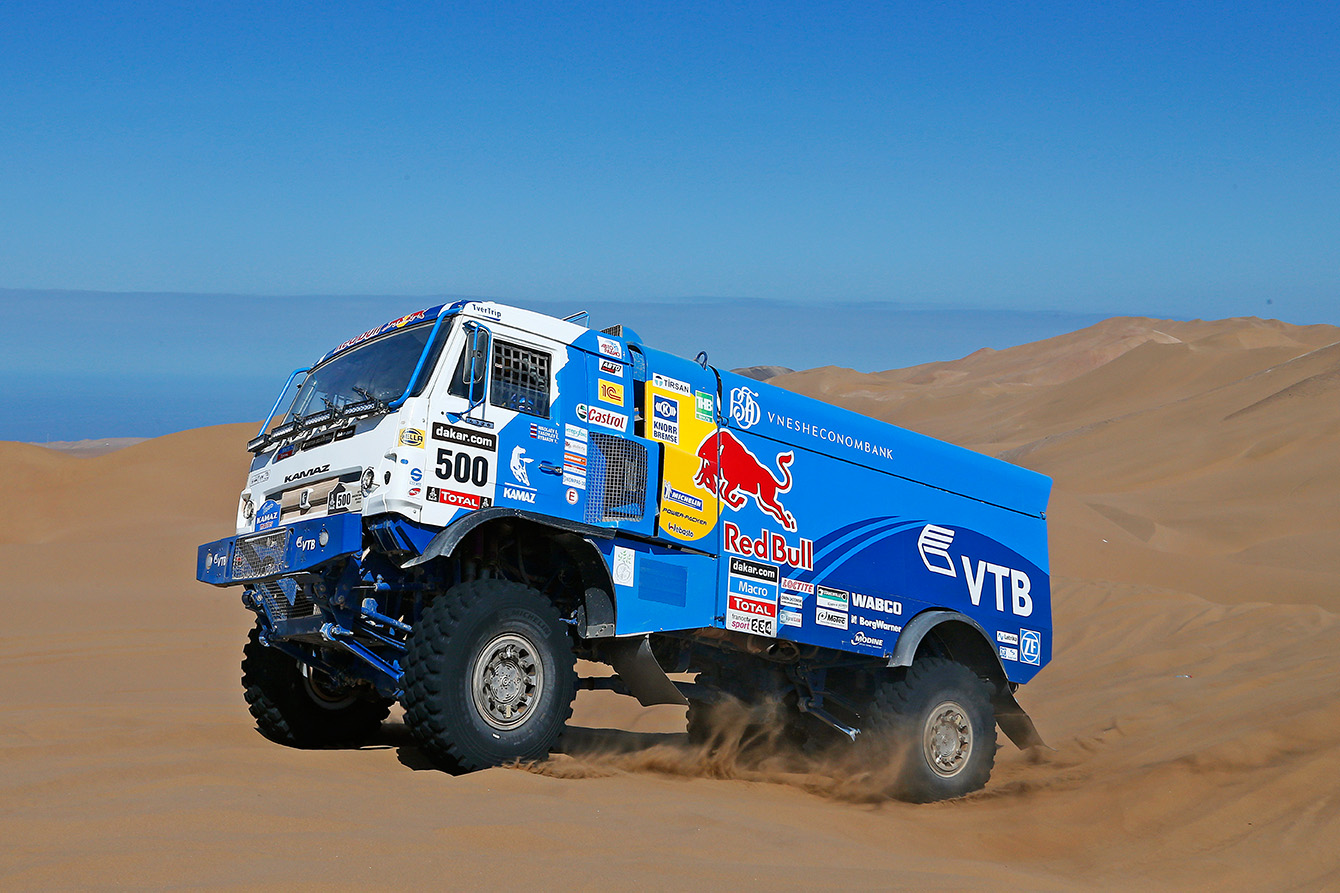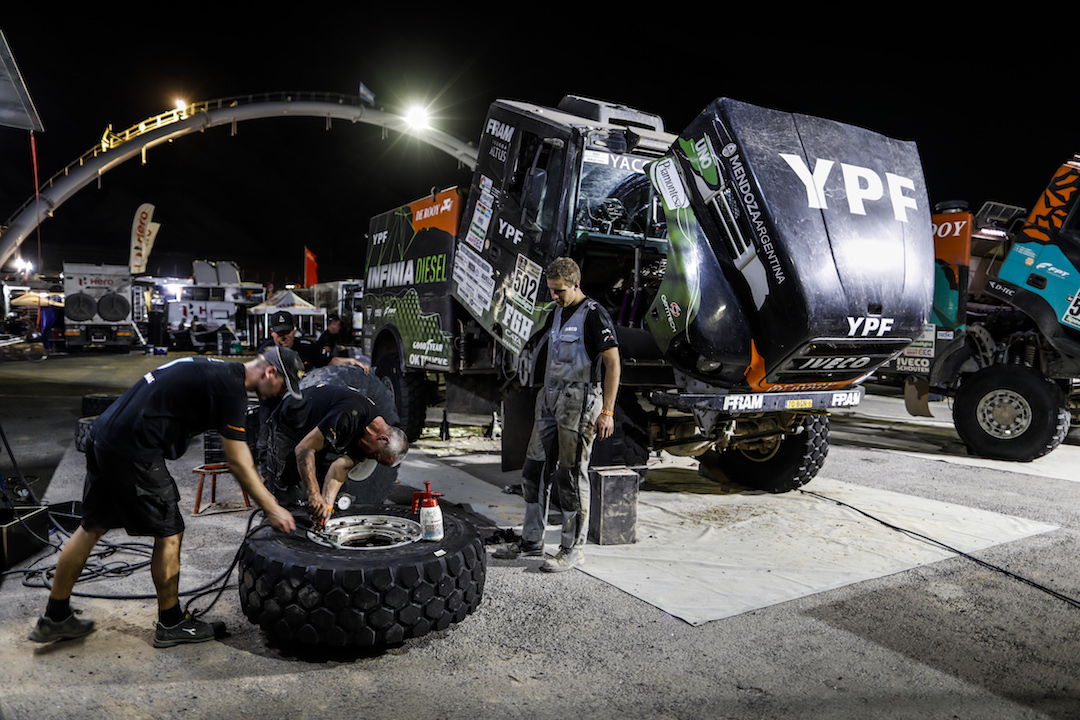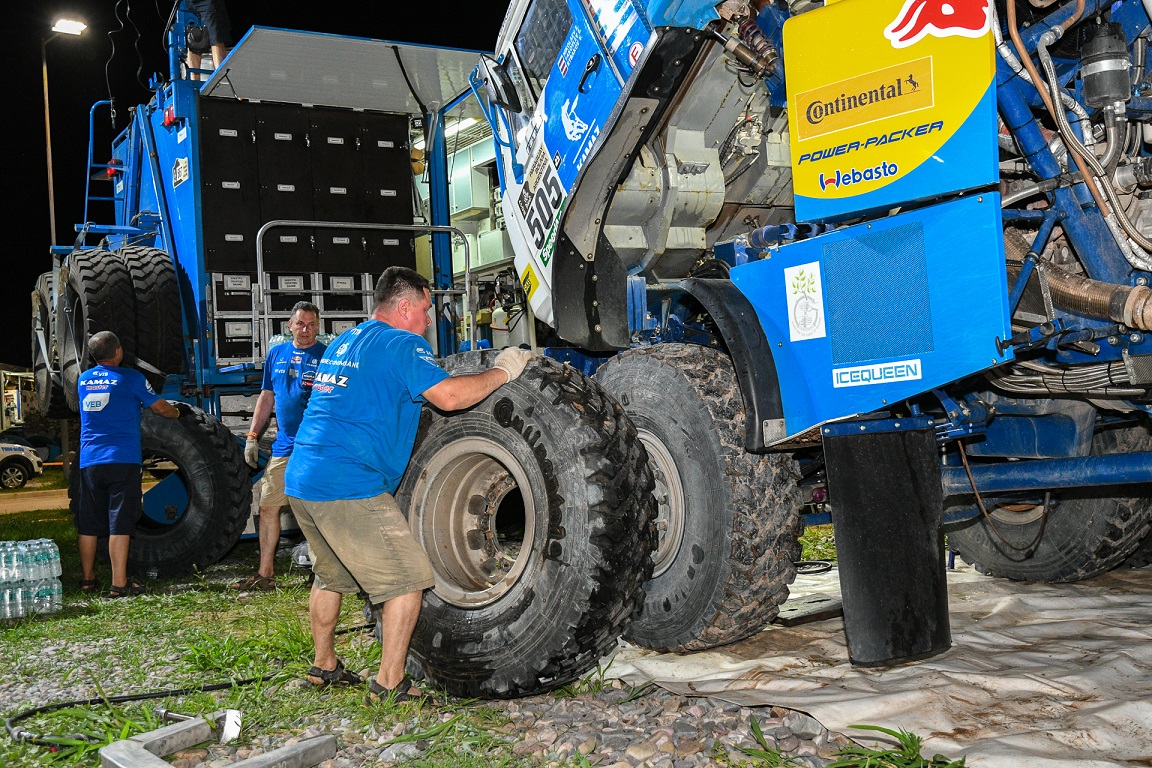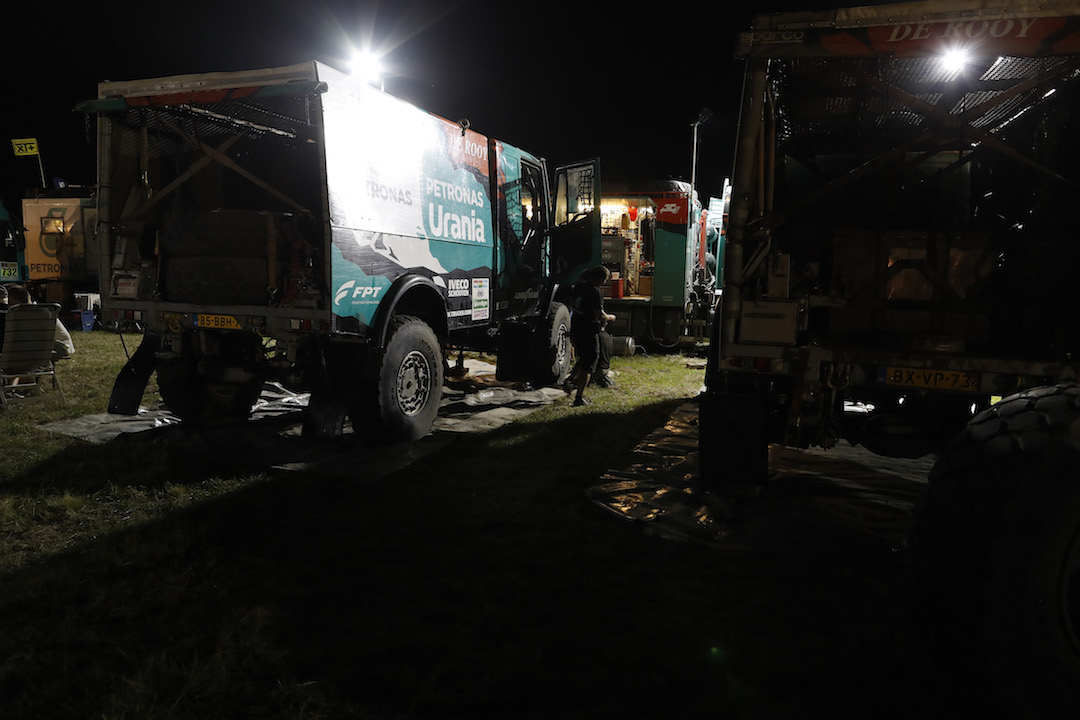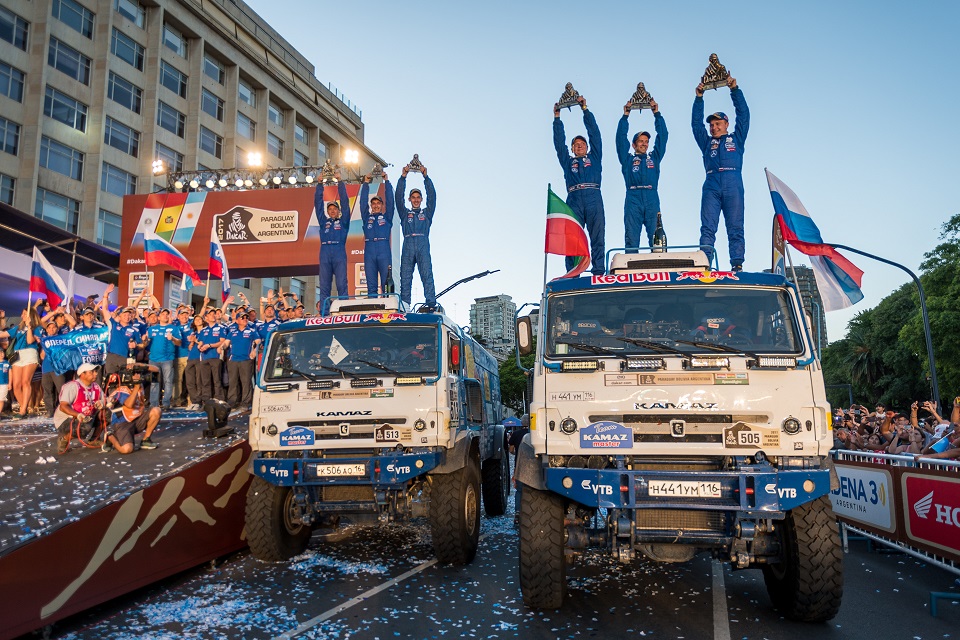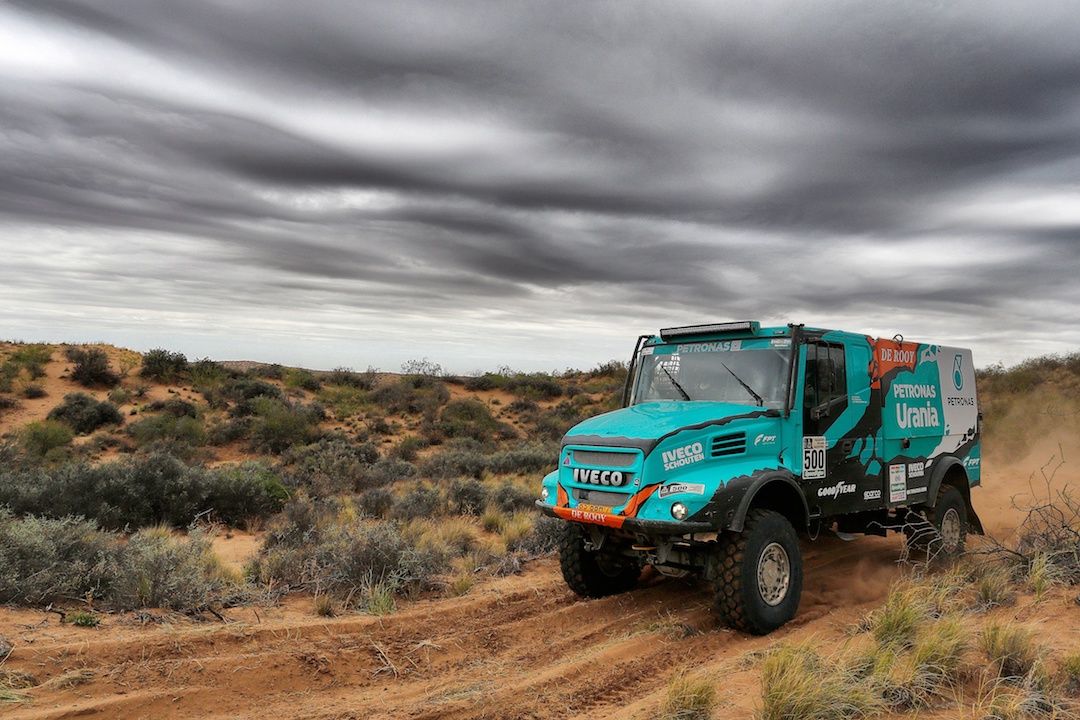" The Christmas and New Year period means a lot of different things to many different people. But for a bunch of offroading lunatics in every automotive genre, it means a couple of weeks of hard toil, sickening adrenalin rushes and "

Dakar support
When the racing trucks are cooler than the racing cars
Which vehicle holds the record for the most stage wins on the gruelling and frankly insane Dakar Rally?
A highly-modified Porsche 959, perhaps? One of those two-wheel-drive lightweight buggies, inevitably sponsored by Gitanes (well, back in my day anyway) with a certifiably mad Frenchman at the wheel?
Nope, not them, and not anything low slung nor outwardly sexy. In fact, the record is held by a Kamaz truck. Actually, it’s the driver, Vladimir “The Czar” Chagin, who holds the record, at 57 stage wins in total, putting him ahead of the legendary Ari Vatanen, who has a ‘mere’ 50 stage wins on the Dakar. But Chagin takes the cake and biscuit by winning those stages not in some low-slung, rocket-fuelled missile of a race car, but in the massive Kamaz truck, a vehicle that looks less racing car, more spacious apartment building.
Race trucks are, of course, inherently cool. From the Mercedes-Benz ‘Blue Wonder’ low-loader that was specifically designed to haul around the 1954 W154 Grand Prix cars, to the famed Ecurie Ecosse Commer truck that hauled the Jaguar D-Type Le Mans winners, to the modern vehicle-surgery-on-wheels F1 trucks, they’re just fascinating. These humble-origin HGVs, made wonderful by their close association with racing cars. I remember becoming unhealthily excited, as a teenager, because I spotted the Ligier F1 team truck on the motorway, but enough about my personal issues…
The fact that trucks race in the Dakar at all is down to the fact that the Dakar is unlike any other event. There is no pitlane, no centralised service park. If the racing car needs a new diff, a replacement driveshaft, a new radiator, whatever it is, it has to be hauled alongside the racing route on a truck. That racing route, whether through Africa as it used to be, or more recently South America, can often stretch to as much as 6,000-miles over the most inhospitable terrain possible.
So, back in the day, the team trucks had to be huge (enough space for spares, mechanics, and some form of rudimentary living quarters), fast, and incredibly tough and rugged. They had to keep up with the competition cars (while usually, in fairness, following a shorter route between stages) and just as able to ford rivers, crest sand dunes, and generally take the sort of punishment that no vehicle should ever have to endure.
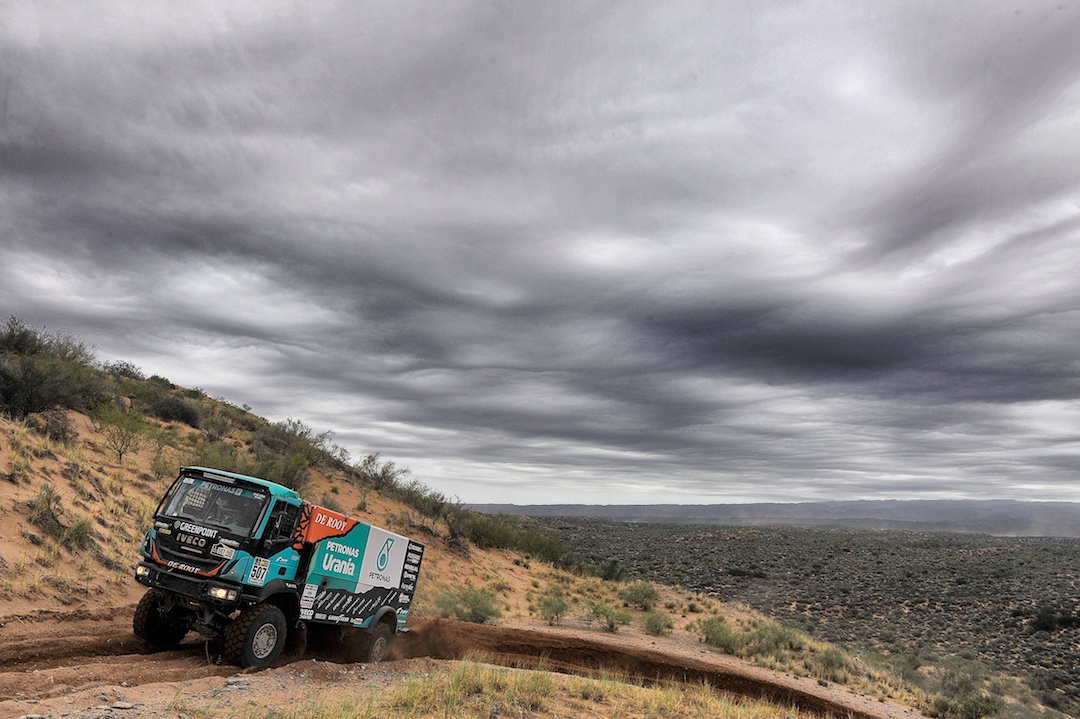
No wonder the Russian-built Kamaz truck became so emblematic of Dakar support crews. It’s a massive thing, weighing more than 9,000kg. They’re not the last word in sophistication — live axles and leaf springs at each end, but those springs are backed up by Reider shock absorbers the size of an elephant’s leg, and they’re designed to deal with the weight of the truck coming back down from a yump.
The current Kamaz racing trucks use 16.5-litre eight-cylinder engines from Leibherr, each one pumping out 965hp, which would be impressive enough, were it not for the gob-smacking 4,000Nm of torque. In racing trim, it can sprint from 0-62mph in 10secs, and on to a top speed of almost 90mph. They carry 237-litres of fuel when full, and those tyres are 50-inches across, stretched over 20-inch rims.
But wait, we’re getting ahead of ourselves. The reason that there are racing trucks at all is more by default than by design. It’s kind of hardly surprising — put a bunch of competitive mechanics in huge, tough, machinery and tell them to go like hell to the next servicing point, and of course they’re going to start racing each other.
The rules for supporting the racing crews changed things too. Stefanie Szlapka from the X-Raid team told us: “At the Dakar only competitors are allowed to help each other. If the team would go on the special stage to help the crew, the crew would be disqualified! So race trucks are the only legal way to bring spare parts and tools to race cars with problems. We always put one or two mechanics on the truck so that they can help to repair the car! For the support race trucks it can be very hard…”
It got to the point where the Dakar organisers decided to make a proper class for racing versions of the trucks, the T4 and T5 classes and it’s these that Kamaz has made its own.
Not that the production versions of these support trucks would be exactly sluggish. In standard form, that Leibherr diesel pumps out 686hp and 3,000Nm of torque, so it’s not going to hang about, even if it will be rather more weighed down with spare parts than would be the racing version.
In spite of such chunky engineering, there’s still a huge drop-out rate for the trucks. Probably only two-thirds, often fewer, of those who start will make it to the end of the event and that’s perhaps less surprising when you hear what the driving technique is. While the lighter cars, buggies, and bikes can, when needed, slow down and pick their way across tougher terrain, the way to drive the trucks — support ones or racing ones — is rather more brutal. Momentum is everything, so you basically get up to speed and then keep the throttle pinned, relying on the sheer inertia to see what will yield first, the terrain or the truck.
It’s not only Kamaz trucks competing or working support duties of course. There are, in both instances, rivals from MAN, the Dinaf company from The Netherlands, Tatra from the Czech Republic, and IVECO. And frankly, you can keep your Porsches or your purpose-built Dakar buggies. There is no sight in racing that can possibly compete with the sight of a Kamaz or a Tatra, riding on those massive wheel, pounding the planet into submission as they either try to swipe a stage win, or just get those fresh driveshafts to the next service park.
Truck, yeah.
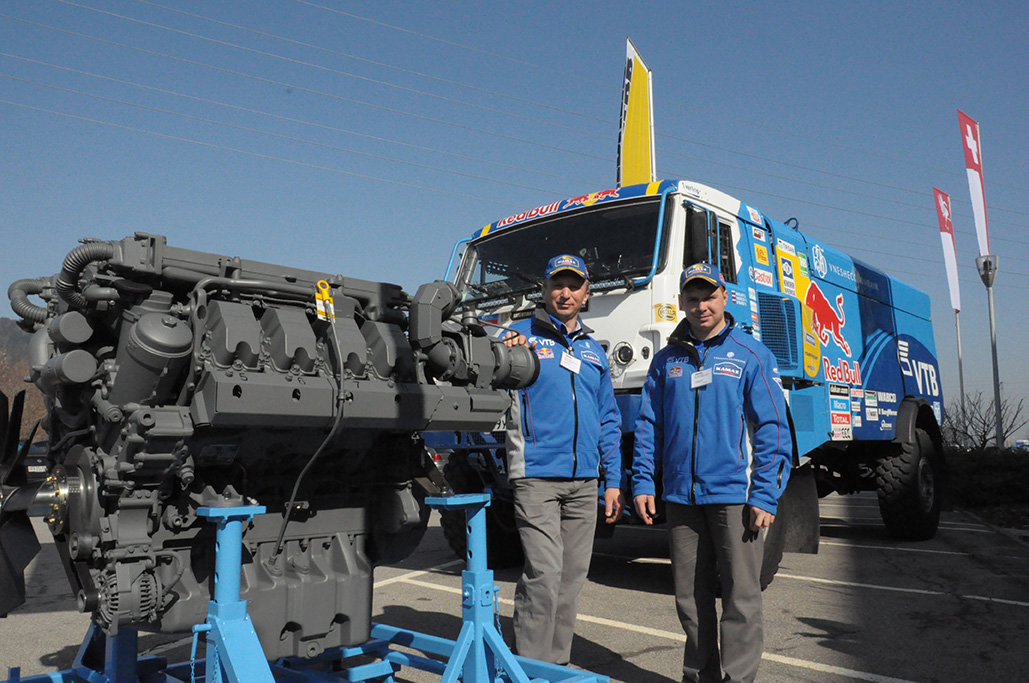
CLICK TO ENLARGE

